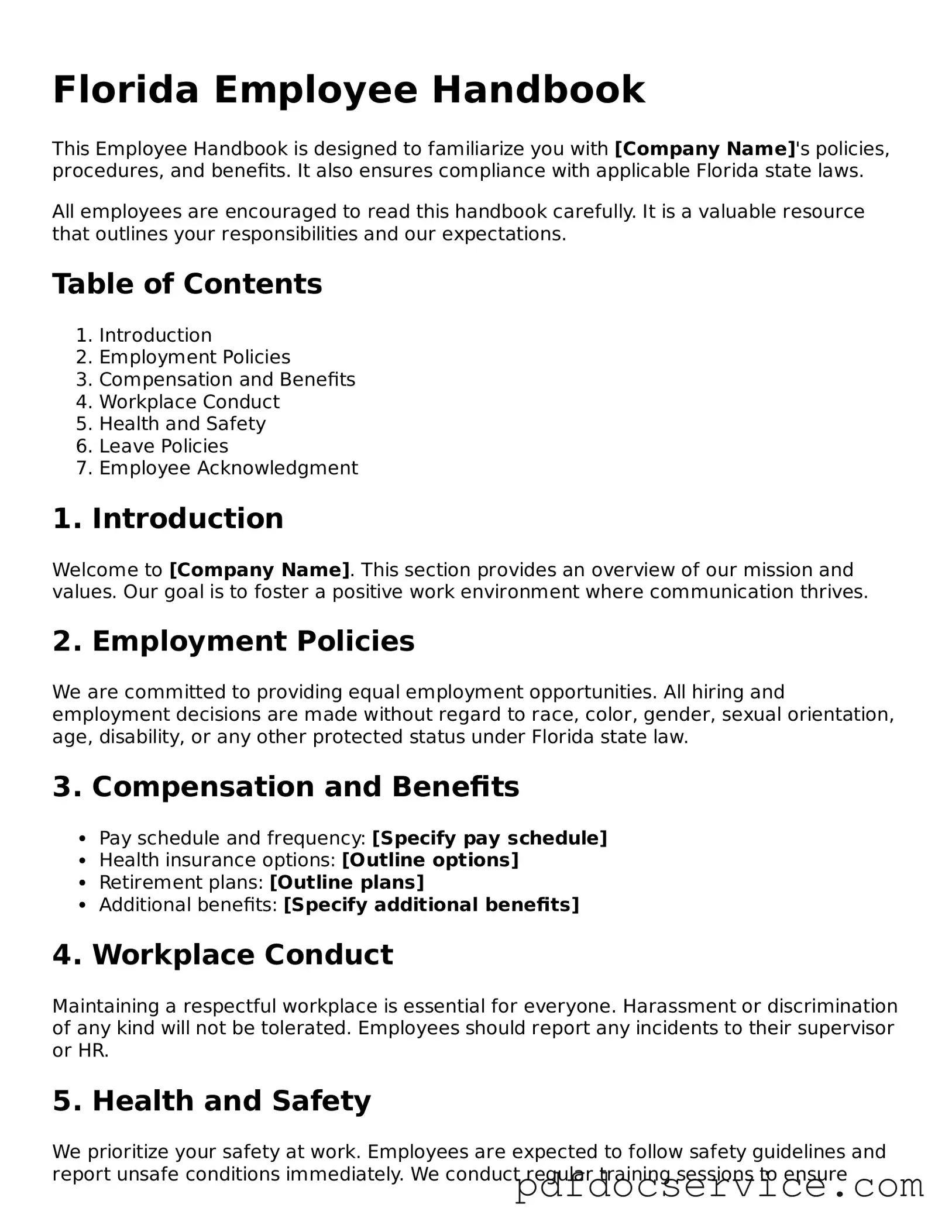The Florida Employee Handbook form is a document that outlines the policies, procedures, and expectations of an employer. It serves as a guide for employees, helping them understand their rights and responsibilities within the workplace.
Why is it important to have an Employee Handbook?
An Employee Handbook is essential for several reasons:
-
It provides clarity on company policies and procedures.
-
It helps ensure compliance with state and federal laws.
-
It sets clear expectations for employee behavior and performance.
-
It can protect the employer from legal disputes by documenting policies.
Who should receive a copy of the Employee Handbook?
All employees should receive a copy of the Employee Handbook, including full-time, part-time, and temporary staff. New hires should receive the handbook during their orientation, while existing employees should have access to it at all times.
How often should the Employee Handbook be updated?
The Employee Handbook should be reviewed and updated regularly, at least annually, or whenever there are significant changes in company policies, procedures, or applicable laws. This ensures that all information remains current and relevant.
What should be included in the Employee Handbook?
A comprehensive Employee Handbook should include the following sections:
-
Company mission and values
-
Employment policies (e.g., hiring, termination)
-
Compensation and benefits information
-
Workplace conduct and expectations
-
Disciplinary procedures
-
Health and safety policies
-
Leave policies (e.g., vacation, sick leave)
-
Equal employment opportunity statement
How can employees provide feedback on the Employee Handbook?
Employees are encouraged to share their feedback regarding the Employee Handbook. They can do so by speaking directly with their supervisor or HR representative. Additionally, some companies may provide a formal feedback form for suggestions and comments.
Is it necessary to have employees sign an acknowledgment of the Employee Handbook?
Yes, it is advisable to have employees sign an acknowledgment form indicating they have received and understood the Employee Handbook. This can help protect the employer in case of disputes regarding policies and procedures.
What should an employee do if they have questions about the Employee Handbook?
If an employee has questions about the Employee Handbook, they should reach out to their supervisor or the Human Resources department. It is important to clarify any uncertainties to ensure compliance with company policies.
Can the Employee Handbook be used in legal disputes?
Yes, the Employee Handbook can be used in legal disputes. It serves as a reference for company policies and employee expectations. However, it is crucial that the handbook is well-drafted and up-to-date to be effective in such situations.
